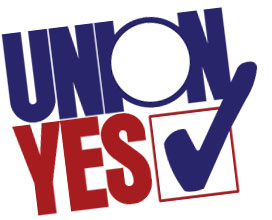According to an IRS rule, churches (and other non-profits) “are absolutely prohibited from directly or indirectly participating in or intervening in any political campaign.” The current Republican Party platform, reports Kevin Baker (N.Y. Times, 8/28/16), wants the rule overturned. The platform plank is a response to some evangelical organizations that desire more direct electoral influence. Catholic institutions wisely know that the current “no politicking” rule is better politically and better theologically.
The current tax-exemption rule is better politically because it saves face for Catholic institutions. They simply cannot deliver the vote. Catholic voters no longer take their cues from Church employees. In fact, when a pastor or bishop wades too deeply into a partisan area, his parishioners drift to the other side.
Likewise, a change in the tax-exemption rule would be bad for Catholic institutions because neither electoral party clearly reflects the moral positions of Catholicism.
A change in the no-politicking rule is also bad theology, or to use jargon, bad ecclesiology.
If a Catholic is prompted to reflect on models of the church, she or he might reply: “My parish uses a collaborative model” or “Our pastor has an authoritarian model.” There is, however, a less parochial way to think about models of the church. That is, to think about how the church is situated within society and culture.
Back in the Middle Ages the church was nearly synonymous with society. Its bishops were the primary influence agents and—for better or worse—acted directly in the palaces and courts of the elites.
With modernity Catholicism (now differentiated from Protestantism) experimented with different models in different locales. For example, in what could be called the lay auxiliary model, Catholicism developed parallel organizations (unions, professional guilds, Christian Democratic parties) in order to offset some secular trends and, after 1848 specifically, to combat atheistic communism. This model was more popular in Europe than in the U.S.
Eventually at Vatican II (1962-1965), Catholicism adopted the cultural-pastoral model. Church institutions in this model are fully separate from civil and secular support. Not because Catholicism is opposed to modernity, but because it has better credibility if its institutions are apolitical. This model is premised on lay Christians taking full, independent responsibility for diminishing injustice in workplaces, bringing harmony to family and neighborhood life, promoting the common good in civic associations and enhancing dignity in culture. Lay people act not as representatives of their bishop, but as baptized Christians, eager to cooperate with God’s on-going creation and redemption.
It is true that 50 years after Vatican II a bishop here and there speaks too specifically about partisan topics. Why? Perhaps because he doesn’t understand or accept Vatican II? Or maybe because he is bored with his proper duty? A bishop is to constantly and sometimes loudly teach Catholic doctrine, including its planks on the right to life, the right of workers to make independent decisions about labor unions, about the integrity of the family, about hospitality to strangers, about dignity regardless of race or sexual orientation, about the social sin of poverty and more. It is a theological and political mistake, however, when a bishop in his ecclesial role expresses an opinion about a zoning matter, about increasing or lowering government farm subsidies, about what he thinks is the best legislative approach for reducing the number of abortions, about allocation of police personnel in various city districts and more. In recent years a few bishops have even tipped their miter toward the Republican presidential candidate. (They cannot do so in the 2016 race because the Republican candidate is blatantly anti-immigrant among other objections.)
When told he is getting a tad too specific and thereby violating Vatican II’s cultural-pastoral model, a bishop says in effect: “Well, the laity are not properly formed in the faith. They even support some anti-Catholic public policies. I therefore have to set the record straight.” This is a circular argument. The more Church employees in their role as employees talk about partisan positions, the less interested are the laity in the teachings of our faith.
Droel edits INITIATIVES (PO Box 291102, Chicago, IL 60629), a newsletter about faith and work.


